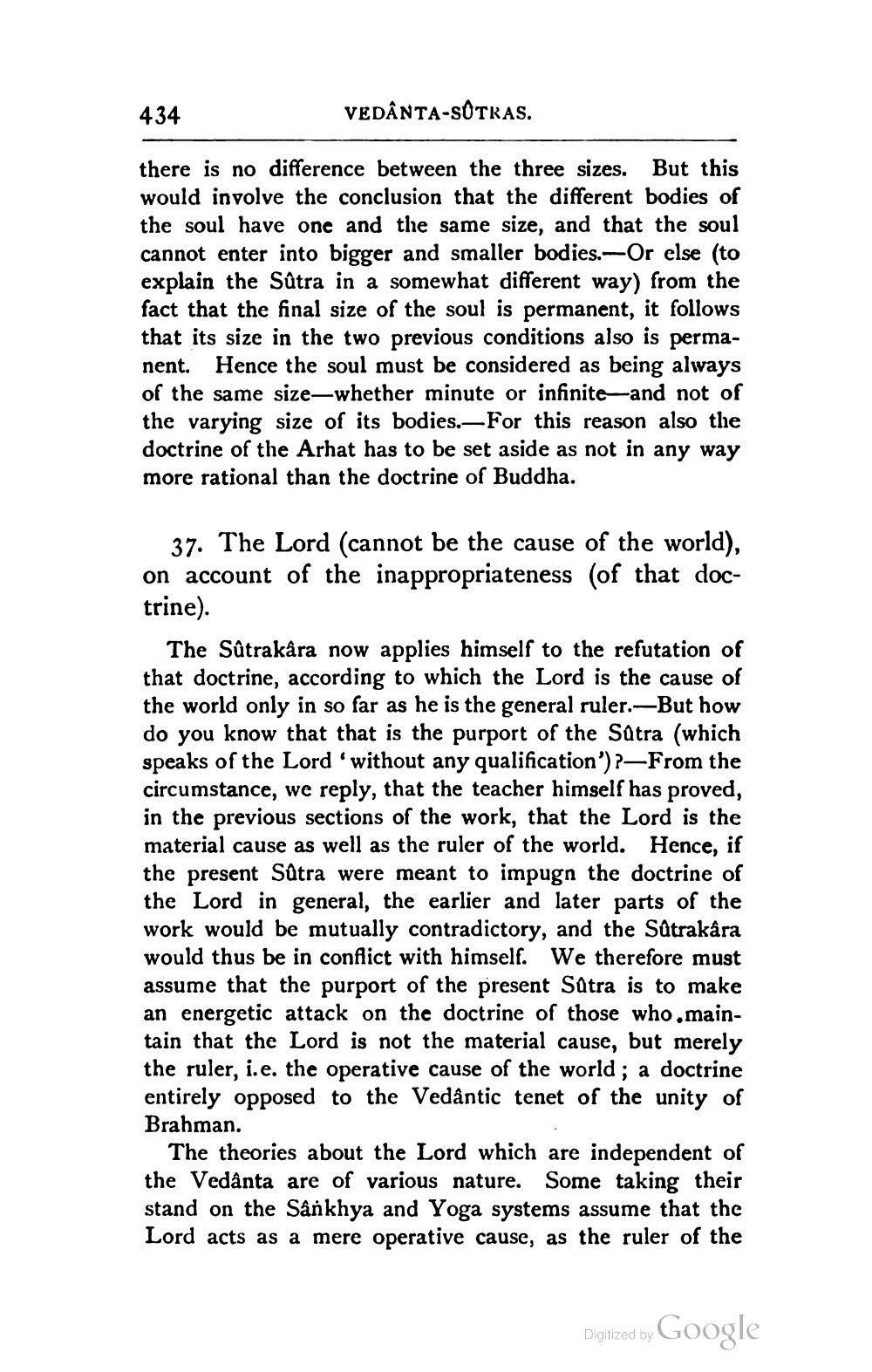________________
434
VEDÂNTA-SOTRAS.
there is no difference between the three sizes. But this would involve the conclusion that the different bodies of the soul have one and the same size, and that the soul cannot enter into bigger and smaller bodies.-Or else (to explain the Sûtra in a somewhat different way) from the fact that the final size of the soul is permanent, it follows that its size in the two previous conditions also is permanent. Hence the soul must be considered as being always of the same size-whether minute or infinite—and not of the varying size of its bodies. For this reason also the doctrine of the Arhat has to be set aside as not in any way more rational than the doctrine of Buddha.
37. The Lord (cannot be the cause of the world), on account of the inappropriateness (of that doctrine).
The Sûtrakâra now applies himself to the refutation of that doctrine, according to which the Lord is the cause of the world only in so far as he is the general ruler.—But how do you know that that is the purport of the Satra (which speaks of the Lord 'without any qualification') ?–From the circumstance, we reply, that the teacher himself has proved, in the previous sections of the work, that the Lord is the material cause as well as the ruler of the world. Hence, if the present Sūtra were meant to impugn the doctrine of the Lord in general, the earlier and later parts of the work would be mutually contradictory, and the Sätrakara would thus be in conflict with himself. We therefore must assume that the purport of the present Satra is to make an energetic attack on the doctrine of those who.maintain that the Lord is not the material cause, but merely the ruler, i.e. the operative cause of the world; a doctrine entirely opposed to the Vedântic tenet of the unity of Brahman.
The theories about the Lord which are independent of the Vedanta are of various nature. Some taking their stand on the Sankhya and Yoga systems assume that the Lord acts as a mere operative cause, as the ruler of the
Digitized by Google




